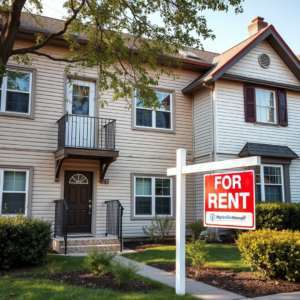In a significant shift within the rental housing market, single-family home rents have skyrocketed to historic levels, now standing at 20% higher than apartment rents across the United States. This milestone, reported by Zillow, reveals a widening gap between the costs of renting different types of homes—one that’s reshaping renter preferences, affordability, and the future of housing supply.
Source: Zillow Press Release – Single-family rents reach record high, 20% above apartments
A Record-Breaking Rental Landscape
According to Zillow’s latest data, the median rent for single-family homes has surged by an astonishing 41% since before the pandemic, compared to a 26% increase for multifamily apartments during the same period. This rapid rise now places the average rent for a single-family home at $350 more per month than a typical apartment—marking the largest disparity ever recorded between the two.
This dramatic price difference is affecting how renters make housing decisions, especially families and individuals looking for more space without the long-term financial commitment of homeownership.
What’s Driving the Surge?
Several key factors are contributing to this unprecedented rise in single-family home rents:
1. Limited New Construction of Detached Homes
While multifamily developments—such as apartment complexes—have expanded to meet growing urban demands, the construction of new single-family homes has not kept pace. With inventory tight and demand high, landlords are able to charge a premium for these properties.
2. Millennials Fueling Demand
Millennials, now the largest generation in the workforce, are increasingly looking for more space to accommodate families, remote work setups, and lifestyle changes. However, many are unable or unwilling to purchase homes due to high mortgage rates and rising down payments, so they’re turning to single-family rentals instead.
3. Homeowners Holding Onto Low Mortgage Rates
Many existing homeowners, especially those who locked in ultra-low mortgage rates during the pandemic, are reluctant to sell. Instead, they’re turning their properties into rental income streams. This has created a new segment of the rental market where previously owner-occupied homes are now being leased out—often at premium prices.
Concessions on the Rise Amid High Costs
Interestingly, even with soaring rents, landlords are offering more incentives to attract tenants. According to Zillow, 41% of rental listings now offer concessions, such as a month of free rent, free parking, or waived application fees. This is also a record high, indicating that despite high prices, competition for tenants is still very much in play.
Implications for Renters and the Housing Market
This shift has wide-reaching implications:
-
Renters Face New Budget Pressures: As rents rise, especially for larger homes, many households may be forced to reconsider their housing choices or relocate to more affordable markets.
-
Increased Demand for Apartments: Some renters may return to apartment living or look to shared housing options, especially in high-cost urban areas where affordability is already stretched.
-
Potential Growth in Rental Housing Supply: If more homeowners decide to rent out their properties due to elevated rates and persistent market uncertainty, it could slowly help ease supply shortages—but likely not fast enough to meet current demand.
Final Thoughts
The rental market is undergoing a transformation that’s challenging the traditional tradeoffs between homeownership and renting. For families seeking space, flexibility, and affordability, single-family rentals have historically been a middle ground. But with rents now outpacing apartment costs by 20%, many may find themselves re-evaluating their priorities.
Whether you’re a renter, homeowner, or investor, staying informed on market dynamics like these is key to making smart housing decisions in 2025 and beyond.
Source: Zillow Press Release – Single-family rents reach record high, 20% above apartments

